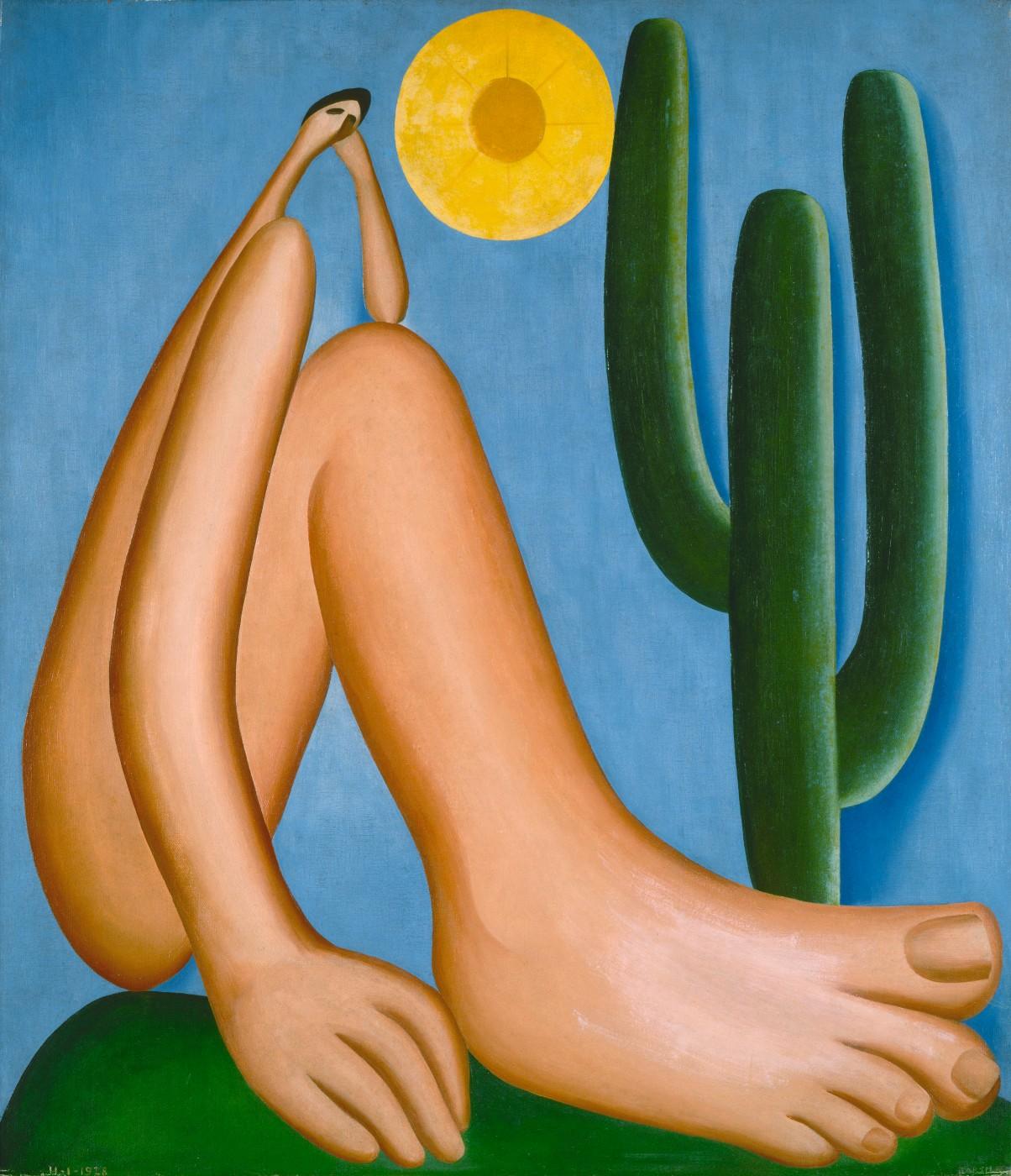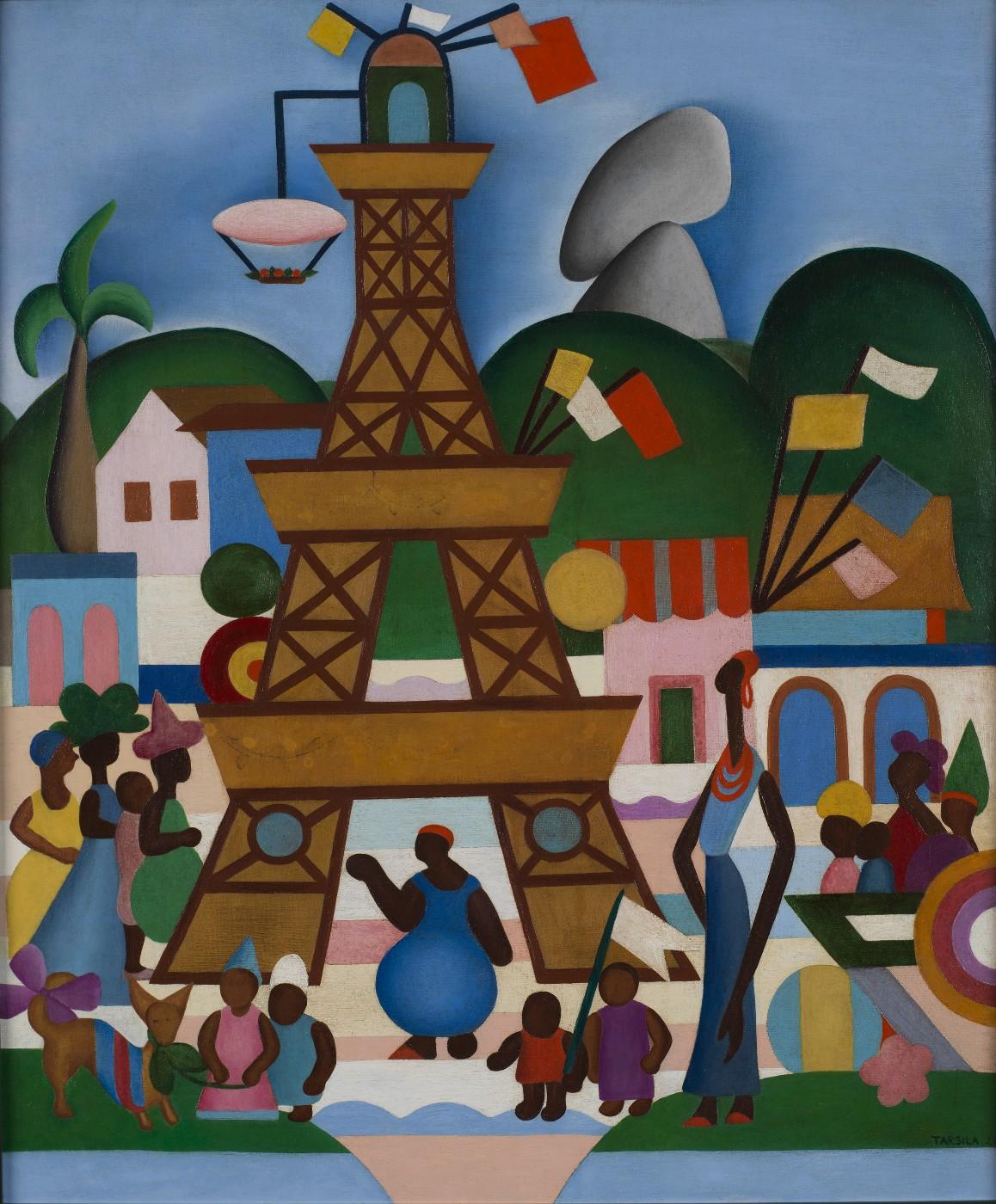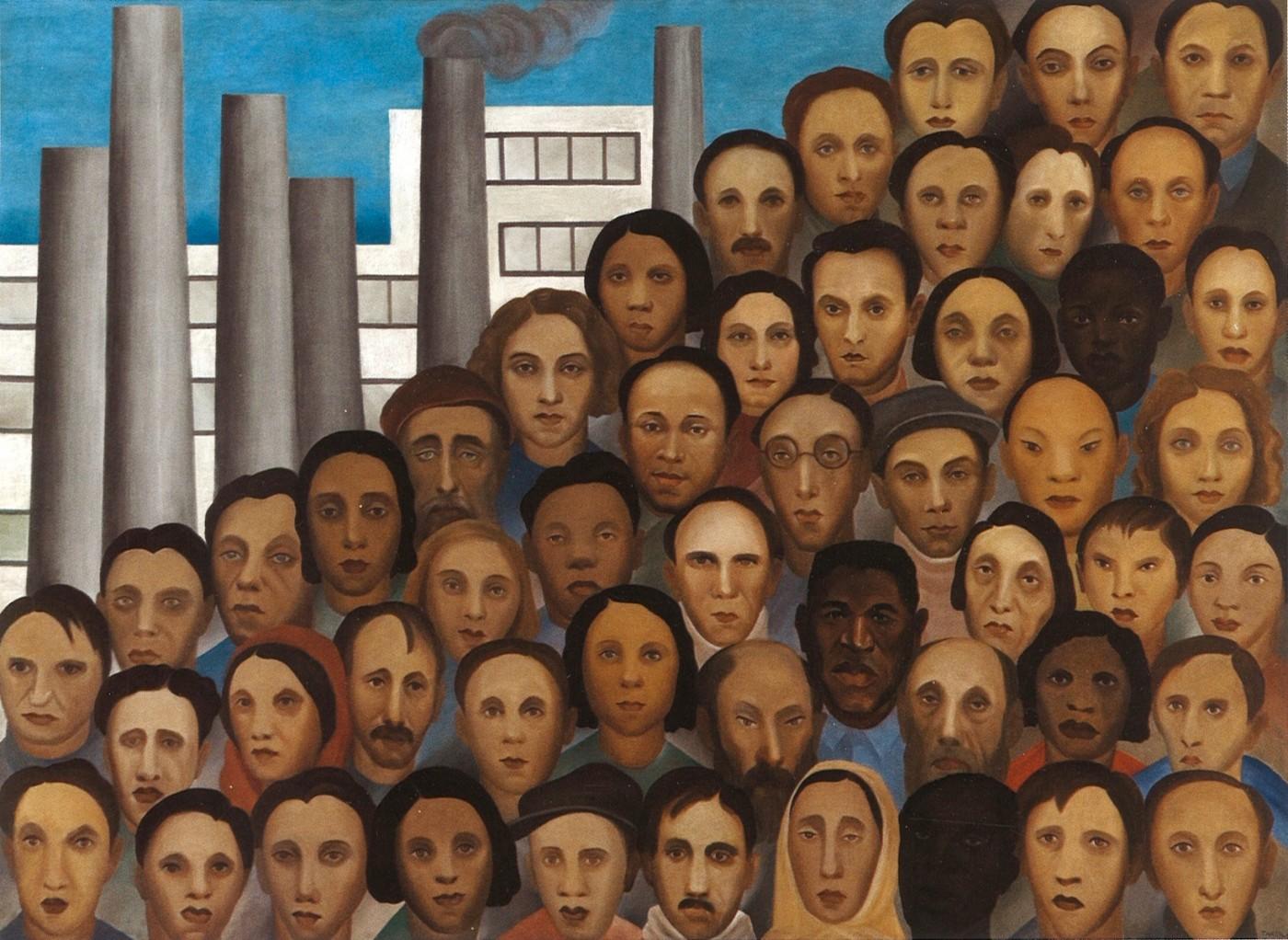Tarsila (as she is most commonly addressed in modernist and Brazilian literature) explored the native flora and fauna in Brazilian regions far removed from the country’s major metropolises. Many of her canvases depict quasi-invented creatures and scenes inspired by her encounters with environments that were just as new to the upper-class urban painter as they are to contemporary viewers. Her most well-known works, such as 1928’s "Abaporu" and 1924’s "A Cuca" showcase the crisp, almost glowing manner in which she molds forms and shapes out of color. Creatures and fantastical plants seem to pop off the canvases, and the combination of so many of these works in a small space makes the excitement with which Tarsila’s collaborators and contemporaries responded to her work easy to share. It is also easy to forget that the artist was an outsider in many of the environments to which she traveled to paint. The celebratory exoticism with which Tarsila depicts places, scenes, and even native peoples is evident in 1924’s "Morro da favela," a work that reduces an example of shantytown life to its patterns and vibrant colors.

Tarsila do Amaral, "A Cuca," 1924. Oil on canvas. 23-13/16 × 28-9/16 in. (60.5 × 72.5 cm). Centre National des Arts Plastiques, Paris, France FNAC 9459.
“Tarsila do Amaral: Inventing Modern Art in Brazil” is currently on view at the Museum of Modern Art and is the first exhibition of the artist’s work in the U.S. Viewers are immediately introduced to Tarsila (1886–1973) via her cubist education. Indeed, it is important that Tarsila’s career be seen with the understanding that she benefited from extensive European modernist training and mentorship. We are shown how her personal style and highly colorful visual language evolved: it was inspired by European developments in formal abstraction and coloration and only later by the artist’s environmental and cultural milieu back in Brazil. The celebratory nature with which Tarsila came to depict her Brazilian surroundings comes across clearly in the show, though surprisingly little is shown of her late career works. As a result, MoMA’s retrospective presents an exciting albeit slightly limited look into the work of one of the most eclectic and canonical South American female modernists.

Tarsila do Amaral, "Abaporu," 1928. Oil on canvas. 33-7/16 x 28-3/4 in. (85 x 73 cm). Collection MALBA, Museo de Arte Latinoamericano de Buenos Aires.

Tarsila do Amaral, "Carnival in Madureira (Carnaval em Madureira)," 1924. Oil on canvas. 29-15/16 x 25 in. (76 x 63.5 cm). Acervo da Fundação José e Paulina Nemirovsky, em comodato com a Pinacoteca do Estado de São Paulo.

Tarsila do Amaral, "Operários (Workers)," 1933. Oil on canvas, 150 × 205 cm (59-1/16 × 80-11/16 in.). Acervo Artístico-Cultural dos Palácios do Governo do Estado de São Paulo.
The exhibition ends with a very brief foray into the artist’s passion for political activism in the mid-1930s. Her 1933 "Workers" sees her applying her penchant for crisp, smooth, almost bulbous rendering to dozens of diverse individuals, but none of her tendency for playful inventiveness is evident here. Tarsila’s interest in communism is limited to this last room, perhaps anticipating that many viewers will be more drawn to those works for which Tarsila is more well known: the colorful canvases of the 1920s full of creatures in fantastical environments that fill the vast majority of the exhibition. MoMA follows in the wake of much contemporary scholarship in crediting her with “inventing” a distinctly Brazilian modernism.
“Tarsila do Amaral: Inventing Modern Art in Brazil” is on view at the Museum of Modern Art in New York through June 3rd.





















![DEl Kathryn Barton [Australian b. 1972] the more than human love , 2025 Acrylic on French linen 78 3/4 x 137 3/4 inches 200 x 350 cm Framed dimensions: 79 7/8 x 139 inches 203 x 353 cm](/sites/default/files/styles/image_5_column/public/ab15211bartonthe-more-human-lovelg.jpg?itok=wW_Qrve3)


